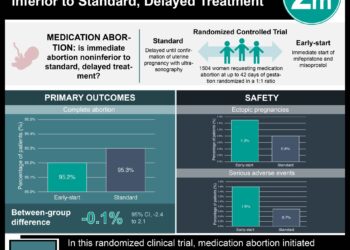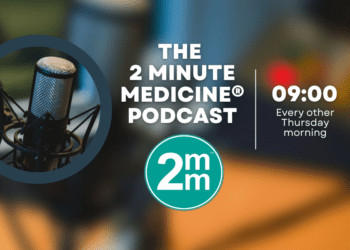More U.S. women using emergency contraception pill
Feb 19th – Data from the 2006-2010 National Survey of Family Growth.
[tabs tab1=”2MM Rundown” tab2= “2MM Full Report”]
[tab]
Image: PD
1. The percentage of women who have ever used emergency contraception has increased to 11%, up from 4.2% in 2002.
2. The most likely users were women ages 20-24, where the incidence of use is about one in four (23%).
The U.S. Center for Disease Control has released a data brief on the use of emergency contraception among women ages 15-44 from its 2006-2010 National Survey of Family Growth. Nearly half of all pregnancies in the US are unintended, making contraception and pregnancy prevention a major public health concern. Emergency contraception pills (ECPs), also known as the “morning-after pill” can be taken within 3-5 days of unprotected intercourse or contraception failure and offer women one last chance to prevent pregnancy.
The survey found that the percentage of women who have ever used ECPs has been increasing: from <1% in 1995, 4.2% in 2002, and 11% of women in 2006-2010. This translates to a current incidence of use of roughly 1 in 9 women of reproductive age. Those most likely to use ECPs were young women ages 20-24, where the incidence of use was 23%. Other variables associated with use were women who were never married, those who were more educated, and Hispanic or non-Hispanic white women. Overall, fear of contraceptive method failure and unprotected sex were cited nearly equally as the primary reasons for using ECPs. However, unprotected sex was a more common reason for ECP use in black and Hispanic women and those with less education, while educated and white women were less more likely to use because of contraceptive failure.
Click to read the report on CDC website
[/tab]
[tab]
Image: PD
1. The percentage of women who have ever used emergency contraception has increased to 11%, up from 4.2% in 2002.
2. The most likely users were women ages 20-24, where the incidence of use is about one in four (23%).
Further reading:
- Uptodate: Emergency Contraception
- Guttmacher Institute: Emergency Contraception State Policies
- FDA: Plan B questions and answers
- Unintended pregnancy in the US: incidence and disparities
- Emergency Contraception: A last chance to prevent unintended pregnancy
In sum: The U.S. Center for Disease Control released a data brief on the use of emergency contraception among women ages 15-44 from its 2006-2010 National Survey of Family Growth. Nearly half of all pregnancies in the US are unintended, making contraception and pregnancy prevention a major public health concern. Emergency contraception pills (ECPs), also known as the “morning-after pill” can be taken within 3-5 days of unprotected intercourse or contraception failure and offer women one last chance to prevent pregnancy.
The survey found that the percentage of women who have ever used ECPs has been increasing: from <1% in 1995, 4.2% in 2002, and 11% of women in 2006-2010. This translates to a current incidence of use of roughly 1 in 9 women of reproductive age. Those most likely to use ECPs were young women ages 20-24, where the incidence of use was 23%. Other variables associated with use were women who were never married, those who were more educated, and Hispanic or non-Hispanic white women. Overall, fear of contraceptive method failure and unprotected sex were cited nearly equally as the primary reasons for using ECPs. However, unprotected sex was a more common reason for ECP use in black and Hispanic women and those with less education, while educated and white women were less more likely to use because of contraceptive failure.
Click to read the report on CDC website
By Maren Shapiro and Leah Hawkins
More from this author: New worldwide target for reducing preterm births by 2015, No cost contraception reduces unintended pregnancies, Active-Duty U.S. servicewomen have higher rates of unintended pregnancy
© 2013 2minutemedicine.com. All rights reserved. No works may be reproduced without written consent from 2minutemedicine.com. Disclaimer: We present factual information directly from peer reviewed medical journals. No post should be construed as medical advice and is not intended as such by the authors or by 2minutemedicine.com. PLEASE SEE A HEALTHCARE PROVIDER IN YOUR AREA IF YOU SEEK MEDICAL ADVICE OF ANY SORT. Content is produced in accordance with fair use copyrights solely and strictly for the purpose of teaching, news and criticism. No benefit, monetary or otherwise, is realized by any participants or the owner of this domain.
[/tab]
[/tabs]




